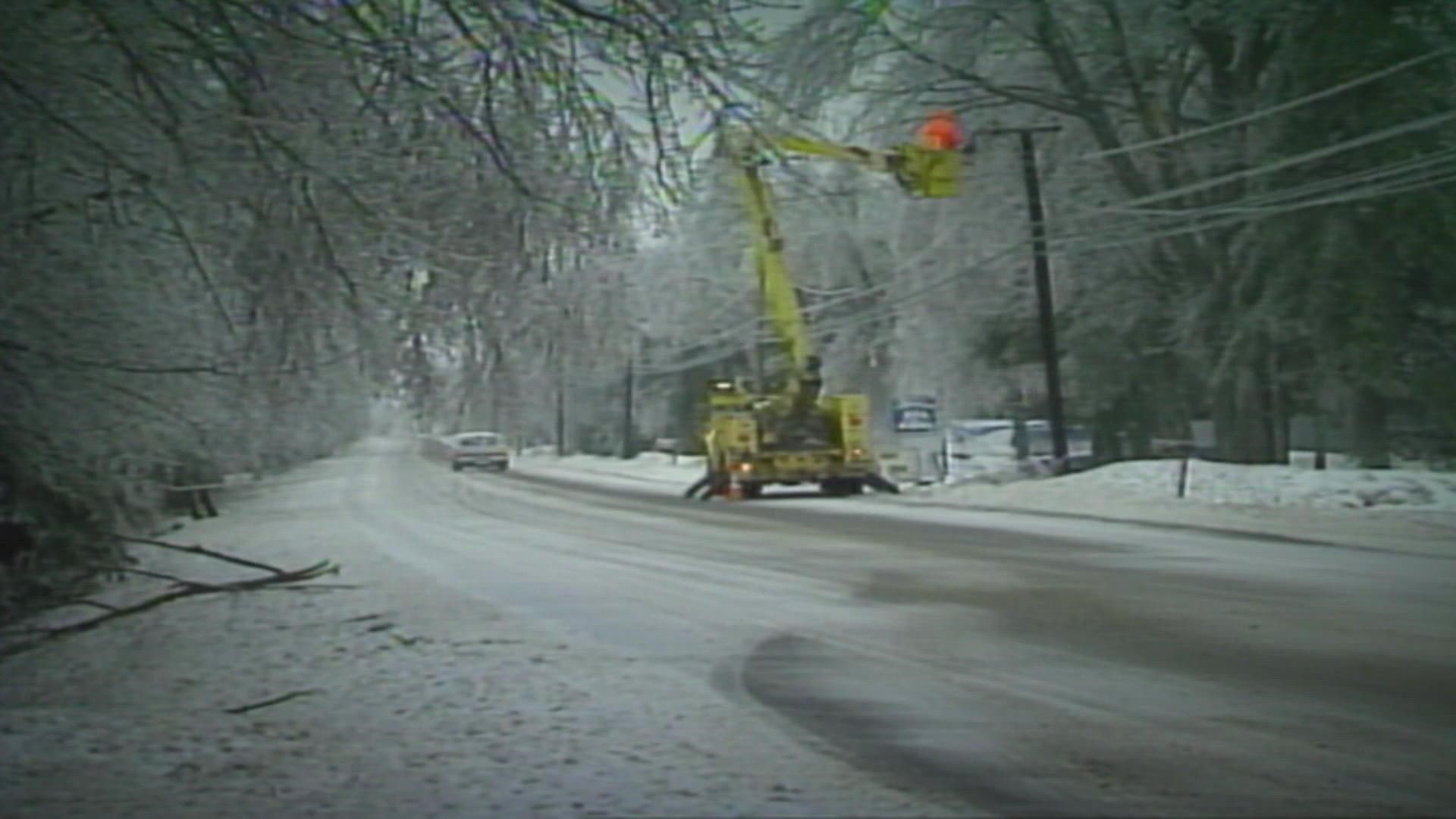PORTLAND, Maine — In January of 1998, Mother Nature brought a storm alright. But the Great Ice Storm of 1998 brought more than just an opportunity to admire nature’s beauty.
Many Mainers hold memories from that weekslong period in the state’s history and will forever. For those leading the restoration response and the state at the time, it was certainly a time they’ll hold onto forever.
“When you run for public office, you never know what you’re going to run into when you get there,” Maine’s independent Sen. Angus King, who was the state’s governor at the time, said. “There’s no manual, nothing you can pull of the shelf and say, 'How do I do this?'"
King said he acted on instinct, which was all he had to go off at the time. The senator said this Ice Storm was his first major disaster he had to deal with as an elected official.
An important measure he took to address the early stages of the response was to do all he could to keep the public informed as they entered the darkness of power outages.
Many were without power for days, some for weeks. It took 23 days to fully restore power to the state of Maine.
Without the up-to-the-second information we can access from our fingertips today, King utilized Maine’s radio and television stations and provided live updates across the state.
“Somebody would call in and say, 'I don’t have any water at my house out on Hampden Road,' and four of five people would show up an hour later with jugs of water,” King said.
The way we handle and respond to mass power outage events is certainly different than what it was in 1998. Joe Purington knows that well. He was an assessor for Central Maine Power 25 years ago and is now the company’s present.
“The ice storm wasn’t about restoring power. It was about restoring the grid,” he said.
Purington still remembers the first drive he took to the CMP office in Augusta, after the ice took over tree branches, telephone poles and wires, and anything left outside during the initial period of the storm when freezing rain fell for days.
“I literally had to take a hammer to my vehicle to get my door open, to get the ice off,” he added. “It was beautiful in one way to see what Mother Nature had done.”
When the sun finally came up, the admiration of what the storm brought could only last a moment as the real work of restoring power began.
The response of thousands of power crews was a record in Maine at the time. Workers spent 17-hour shifts going up and down Maine’s roads doing their best to get power back on.
Former Vice President Al Gore made a visit to Maine two days after King declared a state of emergency on Jan. 13.
Gore met with state officials, toured sites of the damage, infamously was photographed holding a downed power wire, and promised to help Maine any way he could.
King took him up on that promise. Utility crews from North Carolina were soon on their way to the Pine Tree State. Because of the timely demand for more help, they were flown to Brunswick on military planes and arrived like the “calvary,” as King remembered.
Members of the Maine National Guard then escorted the out-of-state crews to damaged areas so the restoration effort could swing into high gear.
When they arrived at areas dealing with heavy damage, they saw scenes that many Mainers either lived through themselves or have since seen over the past 25 years ago.
Ice took over everything in its path, thanks to a perfect, or imperfect, combination of meteorological factors. While there was warmer air in the atmosphere, the ground was well below freezing, so anything outside in the freezing rain, was bound to ice over.
“[The storm] just sat for three, three and a half days, people saw freezing rain. That’s what put it over the edge, it just kept coming on top of that warm front. NEWS CENTER Maine Meteorologist Keith Carson said. “Anything over half an inch is catastrophic because ice is so heavy.”
Some areas of the state saw double and nearly triple those ice amounts, which caused the widespread damage.
Even after many cold, long winter nights, the Ice Storm response was a glowing reminder of Mainers looking out for Mainers.
Neighbors checked in on one another, communities opened warming shelters, and everyone was in it together.
It was a moment frozen in time, but it brought out the brightest in Mainers, and that, too, will never be forgotten.

